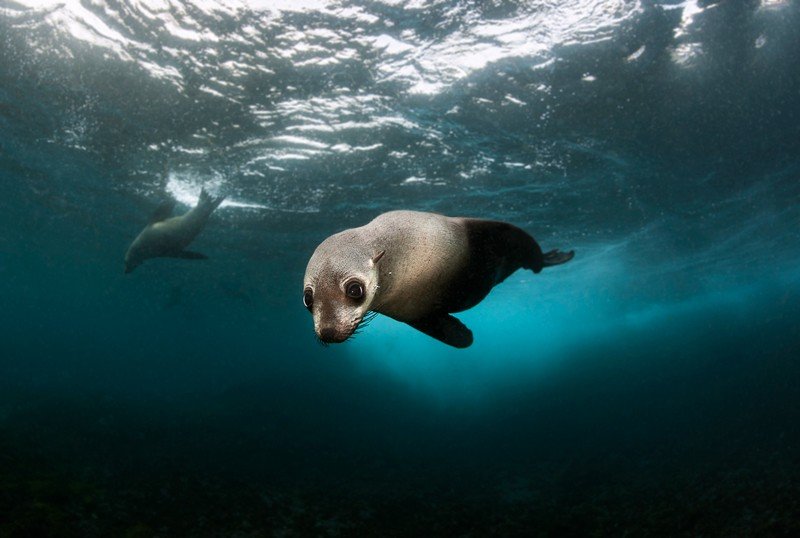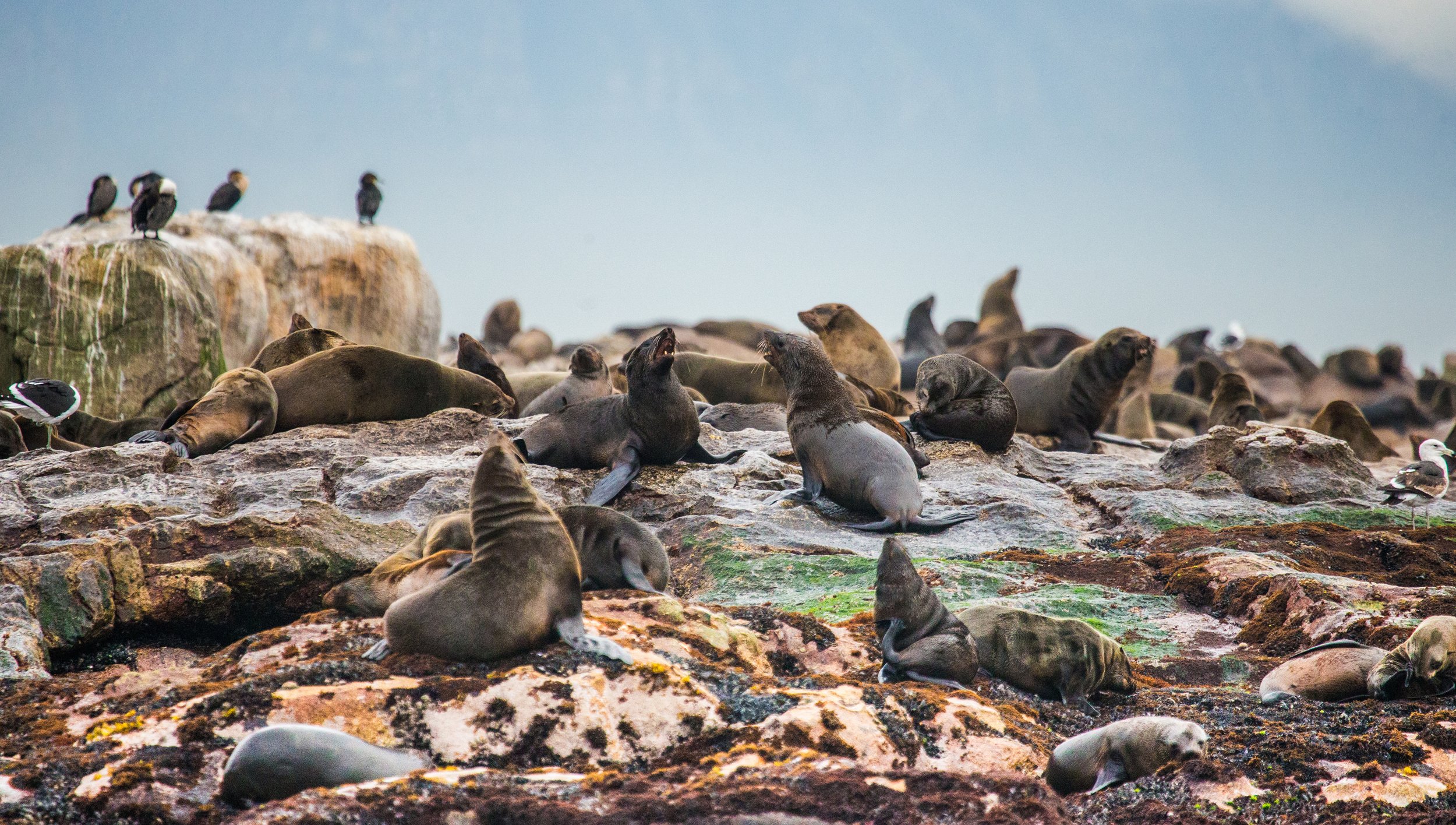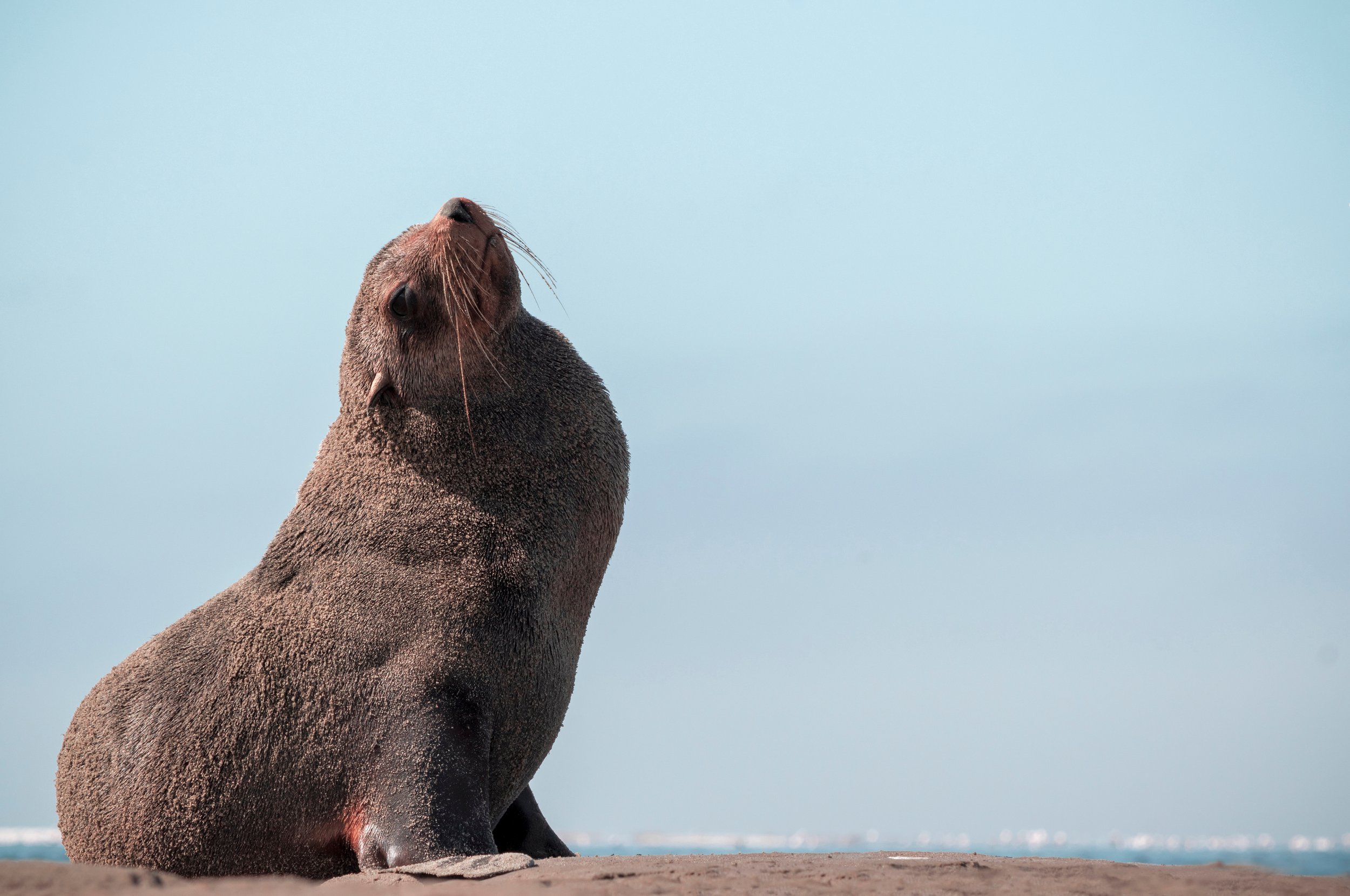
Seal killing
The salmon industry’s killing of native seals.
In 1975, all seals in Australian Commonwealth and State waters became protected, following decades of commercial hunting. While some populations have shown signs of recovery, others have not.
Despite being a protected species, Australian fur seals have been subjected to relentless control by the Tasmanian salmon industry, and whilst other Australian states impose up to six-figure fines for the killing of a seal, the same is regarded as “fishery management” in Tasmania. Consequently, nets, seal barriers and a range of other measures have been used by the Tasmanian salmon industry since the 1990s.
Cruel ‘deterrents’
The industry uses several techniques to ‘deter’ seals, designed to prevent them from entering or remaining in a particular area. Under Tasmanian regulations this may include ‘the use of explosives, the discharge of a projectile, or the use of a chemical substance’.
Devices currently utilised by the salmon farming industry include explosive charges or ‘crackers’ that are thrown into the water and detonate below the surface, lead-filled projectiles known as ‘beanbags’, sedation darts, and seal ‘scare caps’.
The salmon farming industry defends the use of ‘crackers’ by claiming they protect employees, despite harm caused by seals being rare. In September 2021, Government documents revealed three major salmon producers (Tassal, Huon and Petuna / Van Diemen) had detonated over 77,000 crackers since 2018.
Recently obtained documents have revealed ongoing concerns related to seal deterrent methods used by offshore fisheries, indicating the number of seals killed or injured due to approved deterrents is “likely to be much higher than reported”.
Unlike commercial killing, killing in conflict scenarios is rarely underpinned by rigorous or auditable monitoring. Similar outcomes have been noted in the non-commercial killing of kangaroos. As a result, there is significant potential for seal welfare to be compromised.
Though the devices described in the Regulations (and used by Tasmanian fisheries) are referred to as “deterrents”, research shows they pose a significant threat to marine life, with evidence proving these devices can cause significant injury and even death.
Confining wild animals
Though the relocation of seals was officially banned in 2017, a year after Tassal (a Tasmanian-based Australian salmon farming company) was found to have confined 20 seals in an empty salmon pen, the Tasmanian government can still issue permits that allow aquaculture companies to do so.
A wildlife officer with DPIPWE noted two of the seals appeared "extremely lethargic, consistent with having low energy due to having no availability to food for an extended period".
Footage shot by DPIPWE during its 2016 investigation into Tassal's handling of seals shows several animals leaving a pen.
Reports of lethal seal management
In 2018, a deceased seal was found in a Tassal pen with injuries caused by a scare cap dart to their abdomen and intestines. According to a necropsy undertaken by the Tasmanian authorities, “the dart had penetrated the skin and torn through the small intestines”.
In 2019, an Australian fur seal was found with bean bags lodged in their eyes. They were subsequently euthanised due to these injuries.
Further, the South Australian Government published its findings on management techniques that its aquaculture industry would prefer to adopt. It found that personnel approved of culling, with one respondent stating that seals are “the dogs of the sea”, that paintball guns should be used, and that if “two thirds of them could be eradicated [...] there would be no problem”.
In 2020, at least one seal was killed by sedation after being darted multiple times and dying in a salmon pen. Many more are found entangled and drowned in the netting of salmon pens.
In 2021, over 400 crackers, two dart guns and a shot gun were stolen from Tassal’s Dover facility after they were stored incorrectly. The Tasmanian authorities have not provided any updates on this case since.
In September 2021, Government documents revealed three major salmon producers (Tassal, Huon and Petuna / Van Diemen) had detonated over 77,000 crackers since 2018.

Research shows that if appropriate, non-lethal exclusionary methods had been implemented prior to seals becoming reliant on fisheries as a food source, conflict between seals and aquaculture would be a rarity.
Destruction driven by rouge food giant
In 2021, the world’s largest meat processor JBS, a brazilian owned company, bought 100% of Huon aquaculture. The food giant, infamous for their poor treatment of workers, and illegal environmental devastation, causing grave concerns for Tasmanian waters, where Huon fish farms operate. In 2022 it was revealed that Huon Aquaculture (now under the ownership of JBS) was responsible for 75% of seal deaths at Tasmanian salmon farms over the past year, killing 18 of 23 seals killed. Data revealed the company had increased its use of underwater explosives, releasing 8,057 ‘seal crackers’ to frighten wild animals.

Moving forward
Explore some of the solutions available to the current issues facing our marine environment on the previous page.




